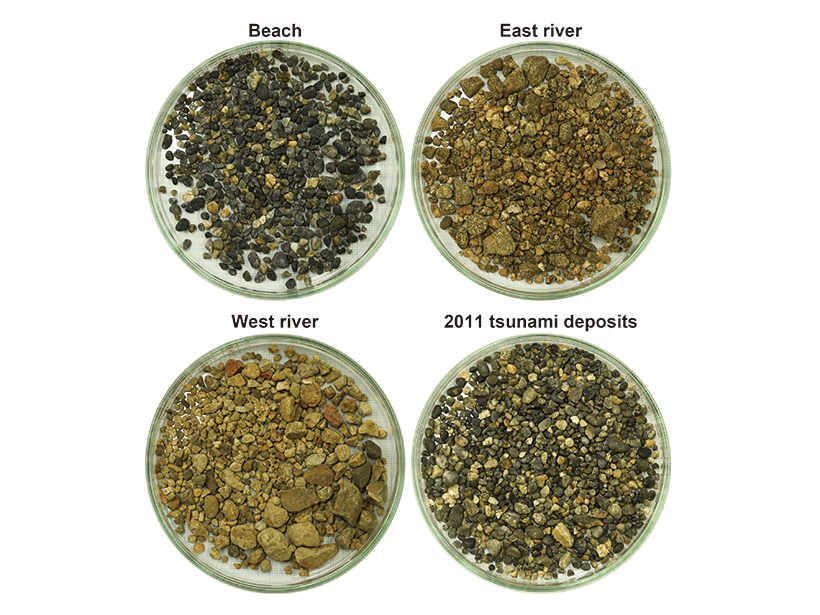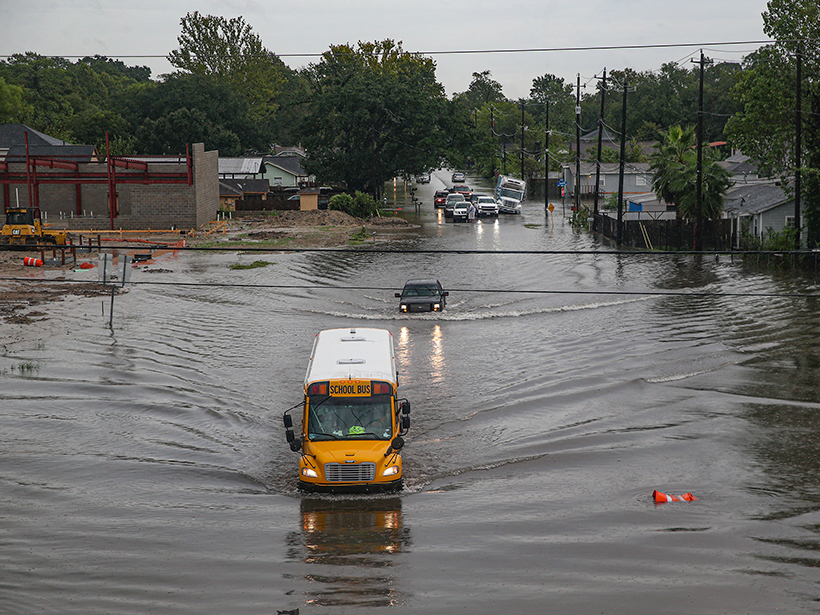Researchers used a combination of ground and space-based measures to look for warning signs for the flank collapse at Anak Krakatau in 2018, which triggered a tsunami that killed hundreds.
tsunamis & storm surges
Gravel Gives Clues to the Strength of Paleotsunamis
The roundness of sediment deposits may shed light on how big tsunamis were in the past and how to evaluate hazards in the future.
AGU Releases Report to Address Flooding in Communities
The Surging Waters report shows how science empowers us to mitigate the impacts on people and property in communities around the United States.
Meteotsunami Spotted for the First Time in the Persian Gulf
The Persian Gulf, a region with high-end resorts and oil-related infrastructure dotting its shorelines, was hit in 2017 by weather-induced waves that rolled roughly a kilometer inland.
Lomonosov: The Crater That Started a Martian Mega Tsunami
Three billion years ago, on Mars, the shores of an ocean may have been flooded by a mega-tsunami. Now the crater left by the bolide impact that probably triggered the tsunami has been identified.
Ceramics Trace a 14th Century Indonesian Tsunami
Archaeological evidence suggests that communities on the northern coast of Sumatra devastated by a tsunami roughly 600 years ago opted to rebuild in the same area, a process repeated in 2004.
Modeling Tsunamis with Social Media
Video footage gathered from social media is used to reconstruct the timing and likely source(s) of the tsunami generated by the 2018 Palu earthquake.
Study of Alaskan Landslide Could Improve Tsunami Modeling
A rare submarine landslide provides researchers with a reference point for modeling the biggest tsunamis.
Weather-Induced Tsunami Waves Regularly Roll Up on U.S. Shores
Roughly 25 meteotsunamis strike coastlines between Maine and Puerto Rico each year, tide gauge data reveal.
Ancient Tsunami Tied to Volcanic Flank Collapse in Italy
Stromboli’s volcanic cone may have suffered multiple flank collapses between the 14th and 16th centuries, triggering tsunamis that led to the abandonment of the island.










